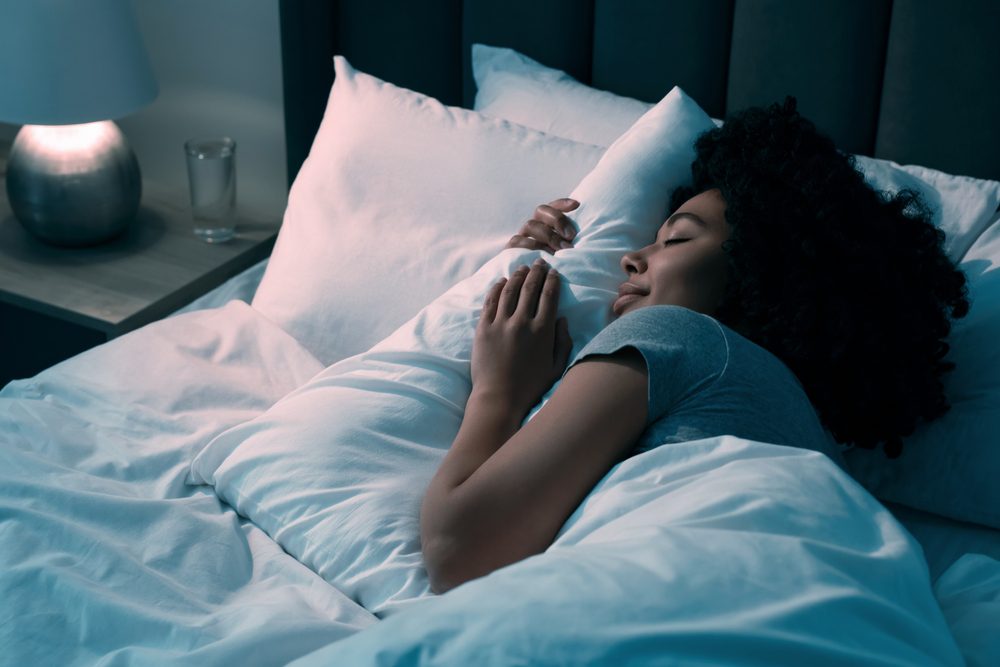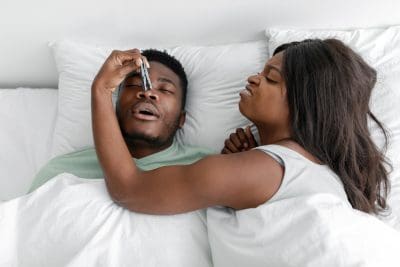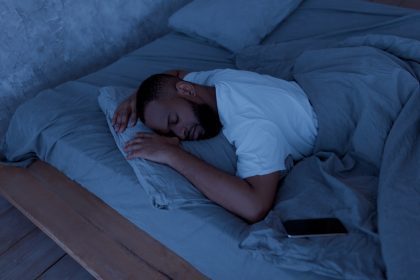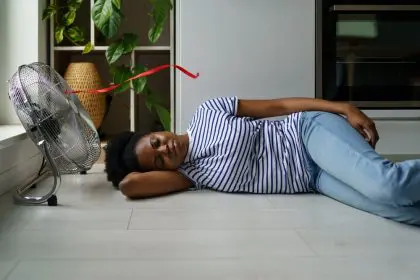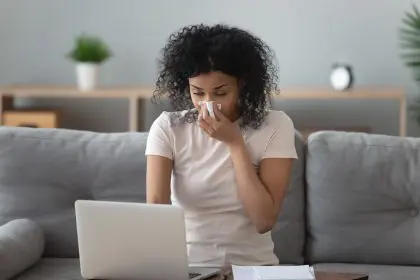Social media platforms have exploded with videos showcasing mouth taping as the latest sleep optimization hack, with influencers and wellness enthusiasts promoting this simple practice as a solution to better sleep, reduced snoring, and improved overall health. The trend involves placing surgical tape or specially designed mouth tape across the lips before sleep to force nasal breathing throughout the night. Millions of people have embraced this practice, believing it offers a simple, cost-effective way to enhance sleep quality and address mouth breathing issues.
The appeal of mouth taping lies in its apparent simplicity and the immediate sense of control it provides over breathing patterns during sleep. Videos showing dramatic before-and-after comparisons of sleep quality, energy levels, and even facial structure changes have driven widespread adoption of this practice across all age groups. However, emerging research reveals that this seemingly innocent sleep hack may pose serious health risks that far outweigh any potential benefits.
The disconnect between social media promotion and scientific evidence highlights the dangers of adopting health trends without proper medical evaluation. While nasal breathing does offer legitimate health benefits, forcing this breathing pattern through mouth taping can create dangerous situations, particularly for individuals with underlying respiratory or sleep disorders that may not yet be diagnosed.
Understanding the mouth taping phenomenon
Mouth taping involves applying various types of tape across the lips to prevent mouth opening during sleep, theoretically forcing the body to breathe through the nose exclusively. Practitioners use different materials including surgical tape, specialized mouth tapes marketed for sleep use, and even regular adhesive tape, despite significant differences in safety and breathability between these options.
The practice gained momentum through social media testimonials claiming improvements in sleep quality, reduction in snoring, elimination of morning dry mouth, and even changes in facial structure over time. These anecdotal reports have driven widespread adoption without consideration of individual health differences or underlying conditions that might make mouth taping dangerous.
Many people attempt mouth taping as a self-directed intervention for perceived sleep problems, often without consulting healthcare providers or considering whether their breathing issues might indicate serious underlying conditions requiring professional treatment. This self-treatment approach can mask symptoms of significant sleep disorders while potentially creating new health risks.
The marketing of specialized mouth taping products has legitimized the practice in many people’s minds, creating the false impression that these products are medically approved or recommended treatments for sleep breathing issues. However, the availability of these products does not indicate safety or effectiveness for the general population.
Nasal breathing benefits drive the trend
The popularity of mouth taping stems from legitimate scientific evidence supporting the benefits of nasal breathing over mouth breathing during sleep and waking hours. Nasal breathing provides superior air filtration, removing dust, allergens, and pathogens before they reach the lungs, while also humidifying and warming incoming air to optimal levels for respiratory comfort.
Nitric oxide production occurs naturally in the nasal passages during breathing, providing antimicrobial effects and supporting cardiovascular health through improved blood vessel function. This beneficial compound is largely bypassed when breathing occurs primarily through the mouth, potentially reducing its health-promoting effects.
Nasal breathing promotes better oxygen uptake and carbon dioxide elimination compared to mouth breathing, supporting more efficient gas exchange in the lungs. This improved efficiency can contribute to better sleep quality and daytime energy levels when nasal breathing occurs naturally without forced restrictions.
The maintenance of proper oral pH and saliva production during nasal breathing helps prevent dental problems including tooth decay, gum disease, and bad breath that can result from the mouth drying that occurs with chronic mouth breathing. These oral health benefits represent legitimate advantages of nasal breathing when it occurs naturally.
Research reveals minimal benefits and serious risks
A comprehensive systematic review analyzing 86 studies related to mouth taping ultimately identified only ten high-quality research papers that met scientific standards for evaluation. This limited research base immediately raises concerns about the widespread adoption of a practice with minimal scientific support for its safety or effectiveness.
Eight of the ten quality studies found no significant health benefits from mouth taping, contradicting the dramatic improvements commonly reported in social media testimonials. This disconnect between research findings and popular claims suggests that perceived benefits may result from placebo effects, improved sleep hygiene practices adopted alongside mouth taping, or other factors unrelated to the taping itself.
Four studies specifically identified serious health risks for individuals with nasal obstruction, including inadequate oxygen intake that could lead to dangerous drops in blood oxygen levels during sleep. These findings are particularly concerning given that many people who mouth breathe have underlying nasal obstruction issues that may not be immediately apparent.
Two studies suggested modest benefits for individuals with mild obstructive sleep apnea, but these improvements were deemed clinically insignificant and did not translate to meaningful health outcomes. The lack of clinically relevant benefits, combined with identified risks, fails to support mouth taping as a viable treatment option even for the specific population that might theoretically benefit most.
Breathing obstruction creates dangerous scenarios
Individuals with nasal congestion, structural abnormalities, or other breathing impediments face particular risks from mouth taping, as blocking the mouth can create scenarios where adequate airflow becomes impossible. Nasal passages that are partially blocked during normal breathing may become completely obstructed during sleep due to positional changes, congestion fluctuations, or natural breathing pattern variations.
The body’s natural response to breathing restriction includes panic responses that can occur during sleep, causing sudden awakening with feelings of suffocation, rapid heart rate, and acute anxiety. These panic episodes can be traumatic and may lead to persistent sleep anxiety that worsens overall sleep quality even after discontinuing mouth taping.
Chronic activation of stress responses due to breathing restrictions places significant strain on the cardiovascular system, potentially leading to elevated blood pressure, increased heart rate variability, and heightened production of stress hormones that can have long-lasting health consequences. These physiological changes can occur even when individuals are not consciously aware of breathing difficulties.
Sleep fragmentation resulting from breathing struggles can negate any potential benefits of forced nasal breathing, as poor sleep quality undermines the very health goals that motivate people to try mouth taping in the first place. The resulting sleep deprivation can create a cycle of worsening health that extends far beyond breathing issues.
Sleep apnea complications become life-threatening
Undiagnosed obstructive sleep apnea affects millions of Americans who may be unaware of their condition, and mouth taping can dramatically worsen this already dangerous disorder. Sleep apnea involves repeated episodes of breathing cessation during sleep, and blocking the mouth can extend these episodes or make them more severe by eliminating the mouth as a backup airway.
Individuals with sleep apnea often unconsciously open their mouths during sleep as the body’s attempt to maintain adequate airflow when nasal passages or upper airways become blocked. Preventing this compensatory mechanism through mouth taping can lead to longer, more dangerous breathing interruptions that increase the risk of serious cardiovascular events.
The loose adhesion of tape during sleep creates choking hazards if tape pieces become dislodged and enter the airway, particularly problematic for individuals who may already be struggling with breathing during sleep apnea episodes. This mechanical obstruction adds another layer of danger to an already compromised breathing situation.
Masking sleep apnea symptoms through mouth taping can delay proper diagnosis and treatment of this serious condition, allowing cardiovascular damage, cognitive impairment, and other health consequences to progress unchecked. Early diagnosis and appropriate treatment of sleep apnea can be life-saving, making any intervention that obscures symptoms particularly dangerous.
Underlying causes require professional evaluation
Chronic mouth breathing often indicates underlying medical conditions that require professional diagnosis and treatment rather than symptom masking through mouth taping. Common causes include structural abnormalities such as deviated septums, enlarged tonsils or adenoids, nasal polyps, or chronic sinus conditions that need specific medical interventions.
Allergic rhinitis and other inflammatory conditions can cause nasal congestion that makes nasal breathing difficult or impossible, requiring targeted treatment with antihistamines, nasal corticosteroids, or other medications. Attempting to force nasal breathing without addressing underlying inflammation can worsen symptoms and delay appropriate treatment.
Sleep positioning, bedroom environmental factors, and lifestyle habits can all contribute to mouth breathing during sleep, and these factors can often be addressed through simple modifications that don’t involve the risks associated with mouth taping. Professional evaluation can identify these contributing factors and recommend safer alternatives.
Hormonal changes, medication side effects, and various medical conditions can affect nasal breathing capacity, requiring comprehensive medical assessment to identify and address root causes. Self-treatment with mouth taping ignores these underlying factors while potentially creating additional health risks.
Safe alternatives address root causes
Saline nasal rinses and sprays can help clear nasal passages and reduce congestion that contributes to mouth breathing, providing relief without the risks associated with forced mouth closure. These gentle interventions support natural nasal breathing without creating breathing restrictions or masking underlying problems.
Proper sleep positioning can significantly improve nasal breathing for many individuals, with slight elevation of the head and sleeping on the side often reducing nasal congestion and promoting natural nasal breathing throughout the night. These positioning changes are safe and can be easily adjusted based on individual comfort and effectiveness.
Addressing environmental factors such as bedroom humidity levels, air filtration, and allergen reduction can eliminate many causes of nasal congestion that lead to mouth breathing. These interventions provide lasting benefits without ongoing risks and often improve overall sleep quality beyond breathing considerations.
Breathing exercises and techniques can help retrain breathing patterns during waking hours, potentially carrying over to improved nasal breathing during sleep without forcing closure of the mouth. These behavioral interventions address underlying breathing habits while maintaining safety and allowing natural adaptation.
Professional sleep disorder treatment options
Continuous positive airway pressure (CPAP) therapy remains the gold standard treatment for obstructive sleep apnea, providing safe and effective treatment that keeps airways open without restricting natural breathing responses. Modern CPAP equipment is much more comfortable and quiet than earlier versions, making adherence more achievable for most patients.
Oral appliances designed by qualified practitioners can help maintain airway patency during sleep for individuals with mild to moderate sleep apnea or those who cannot tolerate CPAP therapy. These devices are custom-fitted and monitored by healthcare professionals to ensure safety and effectiveness.
Surgical interventions may be appropriate for individuals with structural abnormalities that contribute to sleep breathing disorders, offering permanent solutions for problems that cannot be adequately addressed through conservative measures. These procedures require careful evaluation and should only be performed by qualified specialists.
Weight management, lifestyle modifications, and treatment of underlying medical conditions can significantly improve sleep breathing disorders for many individuals, providing comprehensive health benefits that extend far beyond sleep quality improvements.
Individual risk assessment is essential
Personal health history, current medications, and existing medical conditions all influence the safety and appropriateness of any sleep intervention, making professional consultation essential before attempting practices like mouth taping. What may be safe for one person could be dangerous for another based on individual health factors.
Age-related changes in breathing patterns, muscle tone, and sleep architecture can affect how individuals respond to breathing restrictions, with older adults potentially facing higher risks from practices like mouth taping. These age-related factors require consideration in any sleep intervention decision.
Pregnancy, certain medications, and various medical conditions can affect breathing capacity and safety considerations for sleep interventions. Professional evaluation ensures that any recommended interventions are appropriate for individual circumstances and health status.
Regular monitoring and follow-up care help ensure that sleep interventions remain safe and effective over time, allowing for adjustments based on changing health status or treatment response. This ongoing professional oversight is impossible with self-directed interventions like mouth taping.
Social media misinformation creates false confidence
The viral nature of health trends on social media platforms often amplifies anecdotal success stories while minimizing or ignoring potential risks and failures, creating a distorted perception of safety and effectiveness. This selection bias can make dangerous practices appear safer than they actually are.
Influencer promotion of health practices often lacks medical expertise or proper disclosure of potential risks, leading followers to adopt practices without fully understanding the dangers involved. The commercial interests behind product promotion can further skew the information presented to emphasize benefits while downplaying risks.
The personal testimonial format common on social media can be particularly persuasive but lacks the rigorous evaluation and peer review process that characterizes legitimate medical research. Individual success stories cannot account for the wide variation in individual health status and risk factors that affect treatment safety and effectiveness.
Professional medical guidance provides the individualized assessment and ongoing monitoring that cannot be replicated through social media advice, ensuring that interventions are appropriate for individual circumstances and health status.
Long-term consequences of breathing restriction
Chronic exposure to mild breathing restrictions during sleep may have cumulative health effects that are not immediately apparent but could impact cardiovascular health, cognitive function, and overall well-being over time. These subtle long-term effects may not be recognized until significant damage has occurred.
Sleep quality disruption from any cause can have far-reaching health consequences including increased risk of diabetes, cardiovascular disease, cognitive decline, and mental health problems. Any intervention that potentially compromises sleep quality can contribute to these serious long-term health risks.
The psychological impact of sleep-related breathing anxiety can persist long after discontinuing problematic interventions, potentially creating lasting sleep difficulties that require professional treatment to resolve. These secondary psychological effects can be as problematic as the original breathing issues.
Delayed diagnosis of underlying sleep disorders due to symptom masking can allow serious health conditions to progress unchecked, potentially leading to irreversible complications that could have been prevented with timely appropriate treatment.
The viral mouth taping trend represents a concerning example of how social media health advice can promote potentially dangerous practices without adequate consideration of individual health risks or scientific evidence. While the desire to optimize sleep and breathing is understandable, the risks associated with mouth taping far outweigh any potential benefits for most individuals. Professional medical evaluation provides the safest path to addressing sleep breathing concerns while ensuring that underlying conditions receive appropriate treatment rather than dangerous symptom masking.

